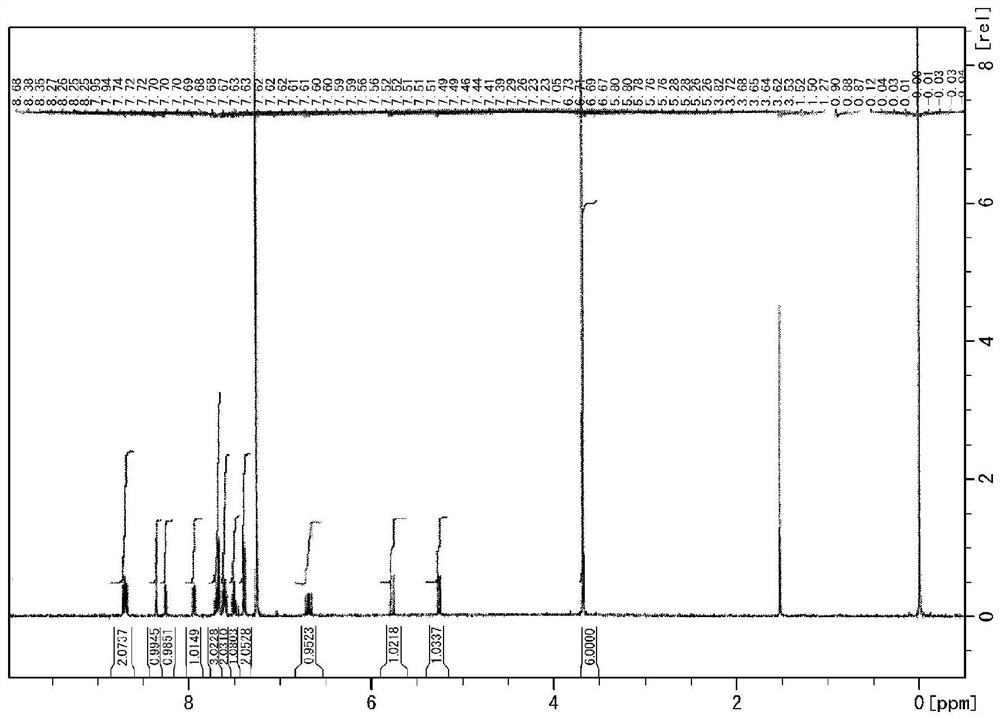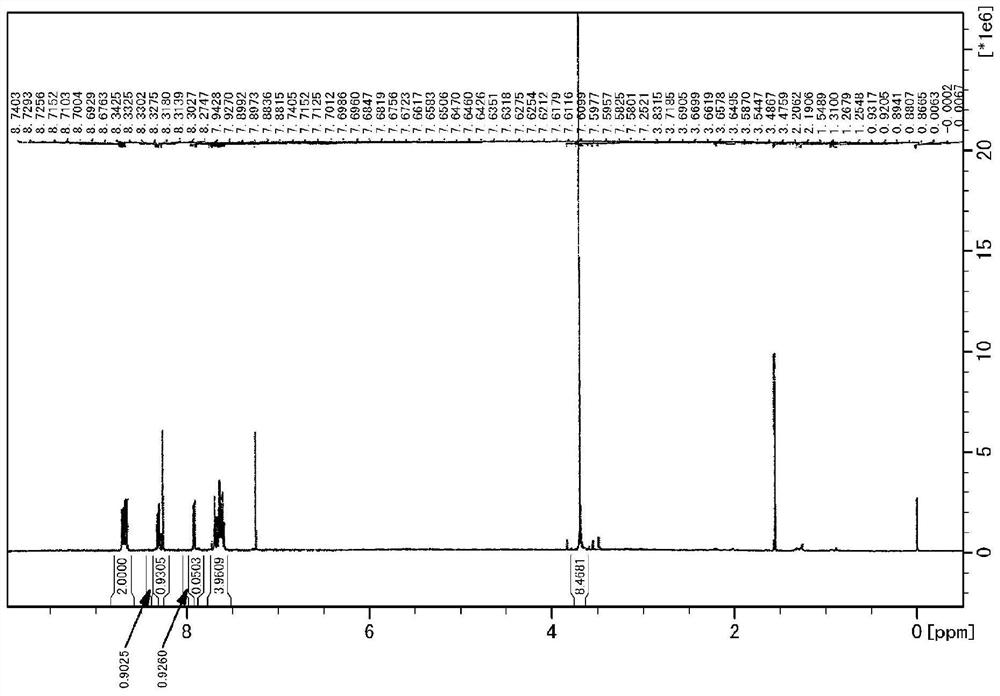Low-viscosity agent of high-refractive-index polymerizable compound and polymerizable composition containing the same
A technology of polymeric compounds and polymeric compositions, applied in instruments, optical components, optics, etc., can solve problems such as increased viscosity of materials, high electron density, and deterioration of operability, and achieve low Abbe number, high refractive index, The effect of excellent optical characteristics
- Summary
- Abstract
- Description
- Claims
- Application Information
AI Technical Summary
Problems solved by technology
Method used
Image
Examples
Embodiment
[0218] Hereinafter, although an Example is given and this invention is demonstrated more concretely, this invention is not limited to the following Example.
[0219] In addition, in the Example, the apparatus and conditions used for the preparation of a sample and the analysis of a physical property are as follows.
[0220] (1) Spin coater
[0221] Device: Cee (registered trademark) 200X manufactured by Brewer Science
[0222] (2) UV exposure
[0223] Apparatus: Intermittent UV irradiation apparatus (high-pressure mercury lamp 2kW x 1 lamp) manufactured by Aigurafex Co., Ltd.
[0224] (3) 1 H NMR spectroscopy
[0225] Installation: AVANCE III HD by Bruker
[0226] Measurement frequency: 500MHz
[0227] Solvent: CDCl 3
[0228] Internal reference: tetramethylsilane (δ=0.00ppm)
[0229] (4) Gel permeation chromatography (GPC)
[0230] Device: Prominence (registered trademark) GPC system manufactured by Shimadzu Corporation
[0231] Column: Showa Denko Co., Ltd. Shodex...
manufacture example 1
[0267] [Production Example 1] Production of dimethoxy(phenanthren-9-yl)(4-vinylphenyl)silane (SPeDMS)
[0268] To a 1 L reaction flask equipped with a condenser, 15.7 g (0.65 mol) of magnesium chips [manufactured by Kanto Chemical Co., Ltd.] was put, and the air in the flask was replaced with nitrogen gas using a nitrogen balloon. A mixture of 151.2 g (0.58 mol) of 9-bromophenanthrene [manufactured by Tokyo Chemical Industry Co., Ltd.] and 518 g of THF was added dropwise thereto over 1 hour at room temperature (about 23° C.), and the mixture was further stirred for 1 hour to prepare a Grignard reagents.
[0269] In a 2L reaction flask, 131.9 g (0.58 mol) of STMS and 259 g of THF were added, and the air in the flask was replaced with nitrogen using a nitrogen balloon. The above-mentioned Grignard reagent was added dropwise thereto under reflux (about 66° C.) over 30 minutes, and the mixture was further refluxed for 24 hours. THF was distilled off from the reaction mixture und...
manufacture example 2
[0271] [Production example 2] Production of naphth-2-ylmethyl acrylate (NMA)
[0272] In a 200 mL reaction flask, 25.0 g (0.158 mol) of 2-naphthylmethanol [manufactured by Tokyo Chemical Industry Co., Ltd.] and 158 g of THF were added, and the air in the flask was replaced with nitrogen using a nitrogen balloon, followed by cooling to 0°C. To this, 17.58 g (0.174 mol) of triethylamine [manufactured by Tokyo Chemical Industry Co., Ltd.] and 15.73 g (0.174 mol) of acryloyl chloride [manufactured by Tokyo Chemical Industry Co., Ltd.] were added, and the mixture was stirred at room temperature (about 23°C). 1 hour. To this reaction mixture was added 158 g of water, and the resultant was extracted with 158 g of ethyl acetate. The solvent was distilled off under reduced pressure from the organic layer using an evaporator to obtain a crude product. The crude product was purified by silica gel chromatography (hexane / ethyl acetate=9 / 1 (mass ratio)) to obtain 21.5 g (yield 64%) of napht...
PUM
| Property | Measurement | Unit |
|---|---|---|
| melting point | aaaaa | aaaaa |
| viscosity | aaaaa | aaaaa |
| wavelength | aaaaa | aaaaa |
Abstract
Description
Claims
Application Information
 Login to View More
Login to View More - R&D
- Intellectual Property
- Life Sciences
- Materials
- Tech Scout
- Unparalleled Data Quality
- Higher Quality Content
- 60% Fewer Hallucinations
Browse by: Latest US Patents, China's latest patents, Technical Efficacy Thesaurus, Application Domain, Technology Topic, Popular Technical Reports.
© 2025 PatSnap. All rights reserved.Legal|Privacy policy|Modern Slavery Act Transparency Statement|Sitemap|About US| Contact US: help@patsnap.com



